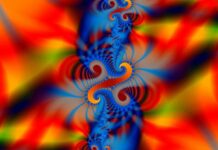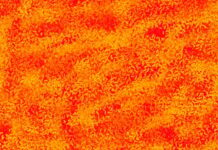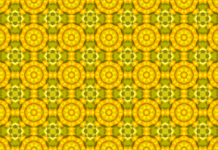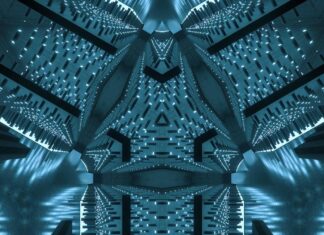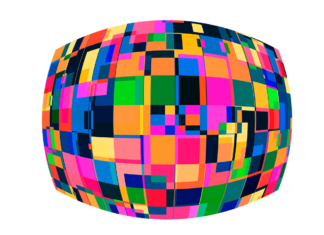NISQ, or Noisy Intermediate-Scale Quantum, refers to a particular stage in the development of quantum computers. Quantum computing represents a revolutionary approach to computation that leverages the principles of quantum mechanics to perform certain types of calculations at an exponentially faster rate compared to classical computers. The term NISQ was coined by John Preskill in 2018 to describe a class of quantum devices that fall between the capabilities of today’s small-scale, error-prone quantum processors and the highly fault-tolerant, large-scale quantum computers envisioned for the future.
At the heart of NISQ is the recognition that quantum computers in this intermediate stage are inherently noisy and prone to errors. However, they hold significant promise for solving problems that are currently intractable for classical computers. Here are key aspects to understand about NISQ:
1. Quantum Supremacy and NISQ: Quantum supremacy refers to the point at which a quantum computer can perform a specific task faster than the most advanced classical computers. While this milestone was achieved by Google’s Sycamore processor in 2019, it marked the era of NISQ. Despite achieving supremacy, the quantum processors used were error-prone and not suitable for general-purpose computing. NISQ systems represent the next step in harnessing quantum capabilities for practical applications.
2. Noisy Intermediate-Scale Quantum Devices: NISQ devices are characterized by intermediate-scale quantum processors with a moderate number of qubits, typically in the range of tens to hundreds. These devices are considered “noisy” because they are susceptible to errors and imperfections in the quantum operations. The challenge lies in developing algorithms and error-mitigation techniques that can still yield meaningful results despite these errors.
3. Quantum Error Correction: One of the significant challenges in the development of large-scale, fault-tolerant quantum computers is dealing with errors inherent in quantum systems. NISQ devices do not yet employ comprehensive quantum error correction, relying instead on various error mitigation strategies to enhance the reliability of quantum computations. This is an active area of research within the field of quantum computing.
4. Quantum Volume: Quantum volume is a metric used to assess the capabilities of quantum processors, considering factors such as the number of qubits, connectivity between qubits, and error rates. As a key indicator of quantum processor performance, increasing quantum volume is a priority in advancing NISQ devices and their practical applications.
5. Applications of NISQ: Despite their limitations, NISQ devices have the potential to tackle certain computational problems more efficiently than classical computers. These include optimization tasks, quantum chemistry simulations, and machine learning applications. Researchers are exploring ways to harness the power of NISQ for solving real-world problems with societal impact.
6. Hybrid Quantum-Classical Algorithms: To maximize the utility of NISQ devices, hybrid quantum-classical algorithms have been developed. These algorithms leverage the strengths of both classical and quantum computation, allowing quantum processors to focus on tasks where they excel while delegating other aspects of the computation to classical systems. This collaborative approach mitigates the impact of errors in NISQ devices.
7. Quantum Software Development: The field of quantum computing is not only about hardware; it also involves the development of quantum algorithms and software. NISQ devices have spurred the creation of quantum programming languages and software tools that enable researchers and developers to work with quantum hardware more effectively. These tools are crucial for exploring the capabilities of NISQ processors and designing quantum algorithms.
8. Progress Toward Fault-Tolerant Quantum Computers: NISQ devices represent an intermediate step on the path to achieving fault-tolerant quantum computers. Researchers and engineers are actively working on improving the performance and reliability of quantum processors, addressing challenges such as decoherence, gate errors, and crosstalk between qubits. The ultimate goal is to develop large-scale, fault-tolerant quantum computers that can handle complex computations with high precision.
9. Quantum Computing Landscape:
NISQ devices exist within the broader landscape of quantum computing, which encompasses various approaches, hardware platforms, and research directions. Beyond the intermediate-scale processors of NISQ, the field envisions the development of fault-tolerant, scalable quantum computers that can perform complex computations with minimal errors. NISQ devices serve as a crucial stepping stone in this trajectory, providing valuable insights into the challenges and opportunities of quantum computation.
10. Quantum Information and Entanglement:
Central to the operation of NISQ devices is the concept of quantum information and entanglement. Qubits, the quantum counterparts of classical bits, can exist in multiple states simultaneously, thanks to superposition, and can be entangled, meaning the state of one qubit is directly related to the state of another. Harnessing these quantum phenomena is essential for performing quantum computations, and understanding how to manage them in the presence of noise is a key aspect of NISQ research.
Challenges of Quantum Decoherence: Quantum decoherence, the loss of quantum information due to interactions with the external environment, is a major obstacle faced by NISQ devices. The delicate quantum states of qubits are susceptible to environmental influences, leading to errors in computations. Overcoming decoherence is critical for improving the reliability and performance of NISQ processors and is a focus of ongoing research.
Quantum Algorithms and Hybrid Approaches: Developing quantum algorithms that exploit the unique capabilities of quantum computers is a significant area of study within the NISQ framework. Researchers are exploring algorithms for optimization, cryptography, and simulation of quantum systems that can take advantage of the strengths of NISQ devices. Hybrid approaches, combining classical and quantum computations, allow for more practical implementations of algorithms on NISQ processors.
Quantum Cloud Computing: As quantum hardware becomes more accessible, quantum cloud computing platforms have emerged. These platforms enable researchers and developers to access and experiment with quantum processors remotely. This democratization of quantum computing resources plays a crucial role in advancing the field and encouraging collaboration. Quantum cloud computing is integral to the exploration and development of NISQ applications.
Industry and Academic Collaboration: The development of NISQ devices involves close collaboration between industry and academia. Leading tech companies, startups, and research institutions are actively engaged in advancing quantum hardware, software, and applications. This collaborative ecosystem accelerates progress in quantum computing, with academic insights informing industry advancements and vice versa.
Quantum Sensing and Metrology: Beyond computation, NISQ devices also show promise in quantum sensing and metrology applications. Quantum sensors leverage the principles of quantum mechanics to achieve higher precision in measurements, with potential applications in fields such as navigation, imaging, and environmental monitoring. NISQ’s role in quantum sensing highlights the versatility of quantum technologies beyond traditional computing.
Quantum Communication Networks: Quantum communication, based on the principles of quantum entanglement and superposition, offers the potential for secure and efficient information transmission. NISQ devices contribute to the development of quantum communication networks, laying the groundwork for quantum key distribution and other quantum-enhanced communication protocols that can enhance the security of digital communication.
In summary, NISQ devices mark a crucial phase in the journey towards practical quantum computing. As researchers grapple with the challenges of noise, errors, and decoherence, they simultaneously explore the potential applications of NISQ in optimization, simulation, sensing, and communication. This intermediate stage not only informs the development of future fault-tolerant quantum computers but also opens new avenues for quantum technologies that extend beyond traditional computing paradigms.





